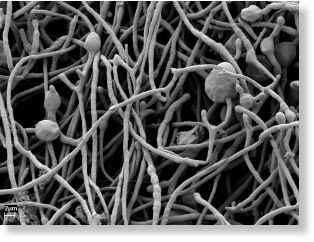
The fungi now classified are considerably more prevalent in the ground than was previously thought, and they probably occur all over the world, scientists believe. DNA has been identified from about a hundred different species of Archaeorhizomycetes. The findings are based on more than 50 studies from different ecosystems such as pine forests in Sweden, grasslands in California, and tropical rainforests in Costa Rica and Australia.
I believe it would be difficult to find a soil sample that does not contain these fungi, says Associate Professor Anna Rosling, who led the work at the SLU Department of Forest Mycology and Plant Pathology. Since they are so common in the ground, we assume they play an important role in soil ecosystems, and now that we can cultivate them, we can finally explore what they do.
It's not quite clear what their role is, but our findings will be of great importance for how we study the function of fungi in the ecosystem and for our understanding of the evolution of fungi.
Nearly twelve years ago, Anna Rosling and her colleagues took samples of coniferous tree roots in Nyänget outside Umeå in Sweden. They cultivated fungi from these roots, but it was a long time before they realize that the slowly growing, beige-colored culture was a unique species, the first known culture of a mysterious type of new soil fungi.
The species was named by the SLU researchers: Archaeorhizomyces finlayi. The "last name" is after a colleague at the department, Professor Roger Finlay.
- We wanted to recognize his many contributions to the scientific understanding of ground ecosystems, says Anna Rosling.
Reference:
Anna Rosling, Filipa Cox, Karelyn Cruz-Martinez, Katarina Ihrmark, Gwen-Aëlle Grelet, Björn D. Lindahl, Audrius Menkis, and Timothy Y. James, "Archaeorhizomycetes: Unearthing an Ancient Class of Ubiquitous Soil Fungi," Science 12 August 2011: 876-879. [DOI:10.1126/science.1206958].



Reader Comments
to our Newsletter